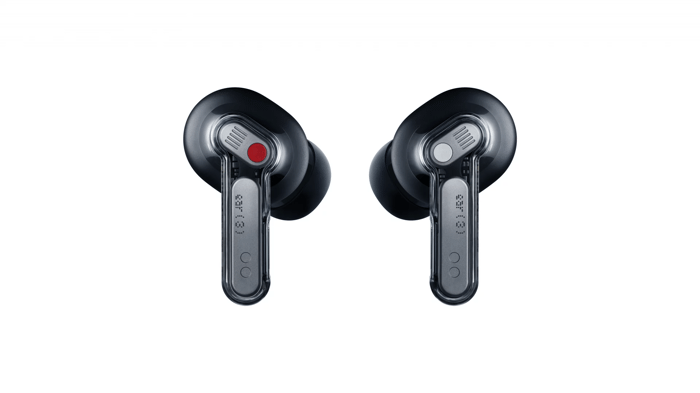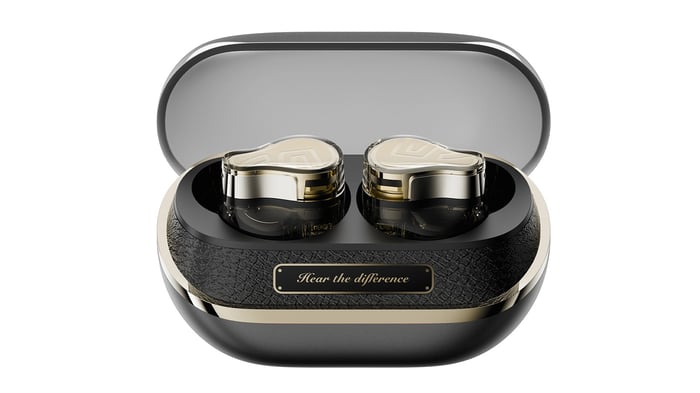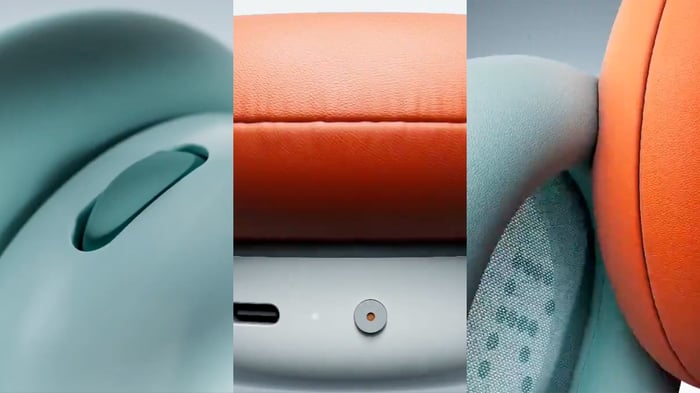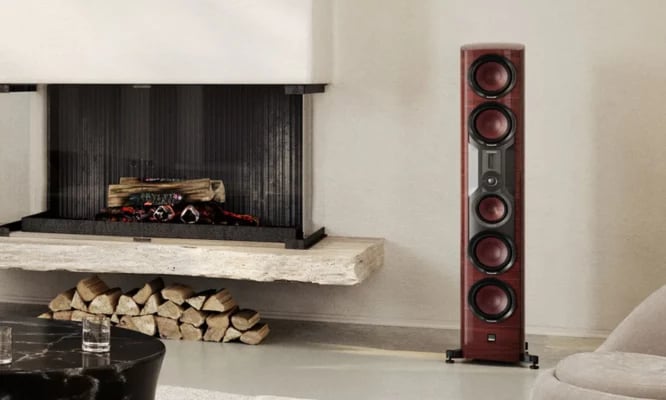
DALI Epikore 11 Loudspeaker Review: A Masterpiece in Audio Engineering
DALI Epikore 11 Loudspeaker Review: A Masterpiece in Audio Engineering
Experience the DALI Epikore 11 loudspeaker’s blend of advanced technology and musical transparency with this detailed review.
An Enthralling Introduction to the DALI Epikore 11
When DALI unveiled the Epikore 11 loudspeaker, derived from their flagship KORE model, it was clear this wasn’t just another speaker. Standing 63 inches tall with a slender 16.6-inch width and a graceful tapering depth, the Epikore 11 is a 4½-way marvel designed to explore new sonic frontiers. The elegantly curved cabinet houses a precise vertical array of drivers: four 8-inch woofers, a 6.5-inch midrange, and a unique duo of tweeters—a 1.38-inch dome and a 0.35 by 2.17-inch planar-magnetic ribbon tweeter.
The layout from top to bottom is clever and purposeful: two woofers, ribbon tweeter, dome tweeter, midrange, then two more woofers, finished with a subtle DALI logo on the front base. My review pair dazzled in a high-gloss piano-lacquered horizontal-grain walnut veneer—pure eye candy for any music lover’s room. The speakers rest on a sturdy aluminum base with four outriggers and adjustable spiked feet, with magnetic spike cups in the kit to optimize performance on different floor types.
On the rear, you’ll find a pair of bi-wire/bi-amp speaker terminals arranged vertically, making cable connections a breeze thanks to their generous binding posts. Twin flared ports near the center back aid airflow. Inside, the Epikore’s design is highly refined, featuring separate internal chambers for the upper and lower woofers as well as the midrange and an isolated hybrid tweeter array.
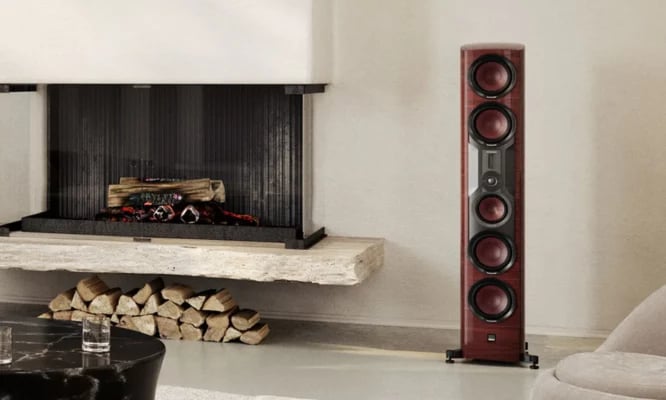
Inside the Epikore 11: Advanced Hybrid Tweeter and SMC Gen-2 Tech
DALI’s EVO-K Hybrid Tweeter module sets the Epikore 11 apart. This tweeter duo, directly descended from the flagship Kore’s design, blends a planar-magnetostatic ribbon tweeter handling frequencies above 12.5kHz with a large 1.38-inch soft dome tweeter covering 3.1kHz to 12.5kHz. The midrange driver, a 6.5-inch paper/wood cone, handles from 370Hz up to 3.1kHz and incorporates DALI’s patented SMC Gen-2 magnet technology, which drastically reduces signal loss and distortion, promising crystal-clear, anomaly-free sound reproduction.
This SMC Gen-2 innovation isn’t limited to the midrange; it extends to the woofers and even the crossover’s solid-core inductors, all working in concert to minimize distortion. The two pairs of 8-inch woofers have staggered frequency roll-offs—one pair topping out at 170Hz and the other extending to 370Hz—to smooth out the bass response, especially tackling the tricky 250–300Hz area where floor bounce cancellations typically muddle sound.
First Impressions and Fine-Tuning the Placement
Once delivered by freight, experts from Lenbrook Americas helped unbox and place the Epikore 11s in the listening room. Right from the start, the speakers sounded impressive, showing a great deal of potential. Over several weeks, I fine-tuned their placement, focusing closely on bass behavior and how tonality and soundstage depth responded.
DALI provides placement tips in the user manual, emphasizing how room acoustics influence sound. In my space, I found three sweet spots where the speaker excelled. The final setup placed the rear of the speakers at least six feet from the back wall and four feet from sidewalls, with about ten feet between the speakers themselves. Interestingly, pulling the speakers slightly closer to sidewalls (around five feet) tightened the bass, particularly between 60Hz and 90Hz, which corresponds to the kick drum's thump in many tracks, but with a slight sacrifice to soundstage width.
Optimal distance from speaker to listener hovered just outside an equilateral triangle, about ten feet away, creating an immersive and balanced listening experience.
Musical Performance: From Vocals to Electronic Beats
The Epikore 11’s midrange resolution stood out with a broad spectrum of vocalists. Livingston Taylor’s voice on “Isn’t She Lovely” (96kHz/24-bit) came through pure and transparent, with intricate separation among bass, guitars, and vocals. Aaron Neville’s “Ain’t No Sunshine” revealed the speaker’s knack for capturing vocal vibrato and timbre while maintaining rhythmic bass and drum punch.
Alison Krauss’s “Ghost in This House” was captivating, with delicate vocal harmonies and pristine string instrument articulation, including the often-overlooked piano notes. The speakers handled Rihanna’s “Umbrella” with dynamic punch and crisp electronic drums that energized the track without losing control over the sound. Similarly, Malia’s “I Feel Like You” from her collaboration with Boris Blank showcased electronic percussion and deep basslines with remarkable clarity and pacing.
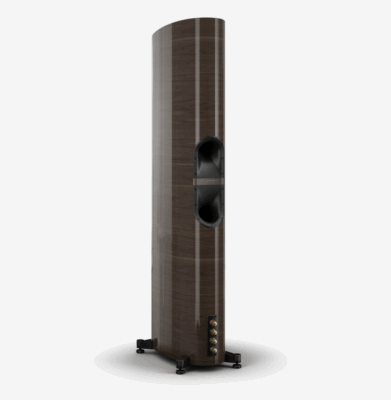
Transparency and Source Distinctions
The Epikore 11’s ability to faithfully reproduce the source material became even more apparent with Lady Blackbird’s “Fix It.” The acoustic bass was grand and realistic, while piano notes rang with reverberant beauty. Lady Blackbird’s emotionally charged vocals were laid bare for the listener, full of nuance and subtle power.
Comparing the digital streaming version to the vinyl pressing of “Fix It” revealed the speaker’s transparency. The vinyl offered a more open, harmonically rich, and spacious soundscape that the Epikore 11 rendered beautifully. Whether digital or analog, the speaker highlighted distinct differences in source quality.
Versatility Across Genres
Though much of my listening focused on vocal-driven pop, jazz, and R&B, the Epikore 11 proved equally adept at handling both large and small-scale classical pieces and raw rock music. Dense mixes were presented with remarkable clarity, making it feel like stepping right into the recording space. This speaker truly adapts like a chameleon to any musical style.
Minor Drawbacks to Note
The only small gripe I encountered was with the outriggers’ spikes, which offer just five millimeters of height adjustment. While adequate for leveling, these spikes struggled to fully penetrate dense carpets with thick padding, partially resting on the carpet surface. Using the supplied magnetic spike cups under the spikes improved performance by focusing the speaker’s weight more effectively through the spikes.
More significantly, the powerful bass output requires careful room placement. When too close to sidewalls, bass can become exaggerated and less controlled, especially around 60Hz to 90Hz, affecting the sound of acoustic bass and kick drums. Moving the speakers further away from the walls brought a smoother, linear bass response that matched the overall high performance of the speaker.
Final Thoughts on the DALI Epikore 11
With its blend of flagship Kore technologies, modern innovations like the EVO-K Hybrid Tweeter and SMC Gen-2 magnets, and a visually striking design, the Epikore 11 is a stellar performer. It offers low distortion, wide dynamic range, and impressive soundstage depth across a wide variety of music genres.
If you have the room and gear to support it, listening to the Epikore 11 is a rewarding experience that showcases DALI’s commitment to elevating loudspeaker design. An audition is highly recommended for serious audiophiles who appreciate both technical excellence and musicality.
Specifications & Pricing
- Type: 4.5-way dynamic loudspeaker
- Loading: Reflex
- Drivers: Four 8” woofers, 6.5” midrange, 1.38” soft-dome tweeter, 0.35” x 2.17” planar-magnetic supertweeter
- Crossover Frequencies: 170Hz, 370Hz, 3.1kHz, 12.5kHz
- Frequency Response: 29Hz–34kHz ±3dB
- Impedance: 4 Ohms nominal
- Sensitivity: 89dB at 1m/2.83V
- Max SPL: 116dB
- Power Handling: 40-1000 Watts
- Dimensions: 16.6” W × 63” H × 21.8” D
- Weight: 75.6 kg (166.67 lbs) each
- Finish Options: High-gloss black, walnut, maroon
- Price: $60,000 per pair
Reference System Used for Review
This review was conducted with a high-end setup including:
- Analog Tape Decks: Otari MTR-10 Studio Mastering tape deck, Studer A820 Studio Mastering tape deck, Studer A80VU MKII Studio Mastering tape deck, ReVox A700 tape deck, Stellavox SP7 tape deck, Nagra IV-S tape deck, ReVox G-36 tape deck
- Analog Vinyl Setup: Basis Audio Debut Vacuum turntable, TW Acustic Raven 2 turntable, Graham Phantom III tonearm, Lyra Atlas Lambda cartridge
- Digital Source: Intel i7 10th generation processor music server running JRiver, Roon, and Qobuz
- Preamplification: Dual Placette Audio Active Linestage, Soulution 326 preamplifier
- Amplification: Custom/Modified solid-state Monoblocks, Soulution 312 amplifier
- Loudspeakers: Vandersteen Model 3a Signature with dual 2Wq subwoofers and dual SUB THREE subwoofers using M5-HPB high-pass filter, DALI Epikore 11
- Cables: Assortment of AudioQuest, Shunyata, Tara Labs, Acoustic Research, Cardas, and custom cables
- Support: Minus-K BM-1, Neuance shelf, Maple wood shelf, Symposium Ultra
- Acoustics: Walker Audio
- Accessories: Aurios Pro, Pneuance Audio, Walker Audio, Klaudio KD-CLN-LP200, VPI 16.5, Clearaudio Double Matrix Professional Sonic
- Room Dimensions: 18’ (W) x 8’ (H) x 43’ (L)
- How tall is the DALI Epikore 11 loudspeaker?
It stands 63 inches tall, making it a commanding presence in any room. - What is unique about the tweeter design?
The Epikore 11 uses an EVO-K Hybrid Tweeter combining a planar-magnetic ribbon tweeter and a soft dome tweeter for exceptional clarity across the high frequencies. - What is the recommended room placement for optimal bass?
Ideally, place the speakers at least 6 feet from the rear wall and 4 to 5 feet from sidewalls to achieve smooth, linear bass response. - Can the Epikore 11 handle different music genres?
Absolutely! It adapts well to everything from delicate acoustic and jazz to powerful rock and classical. - What finishes are available for the Epikore 11?
High-gloss black, walnut, and maroon finishes are offered, all with a luxurious piano-lacquered sheen.
Elevate your listening sanctuary with stunning artwork—shop your favorite album cover poster at our store and bring your musical passion to the walls. Explore the collection here.
 | DISCOUNTGET 30% OFF*Use code on your next order:
|
* This post may contain affiliate links, meaning we earn a commission if you make a purchase through these links, at no additional cost to you.



